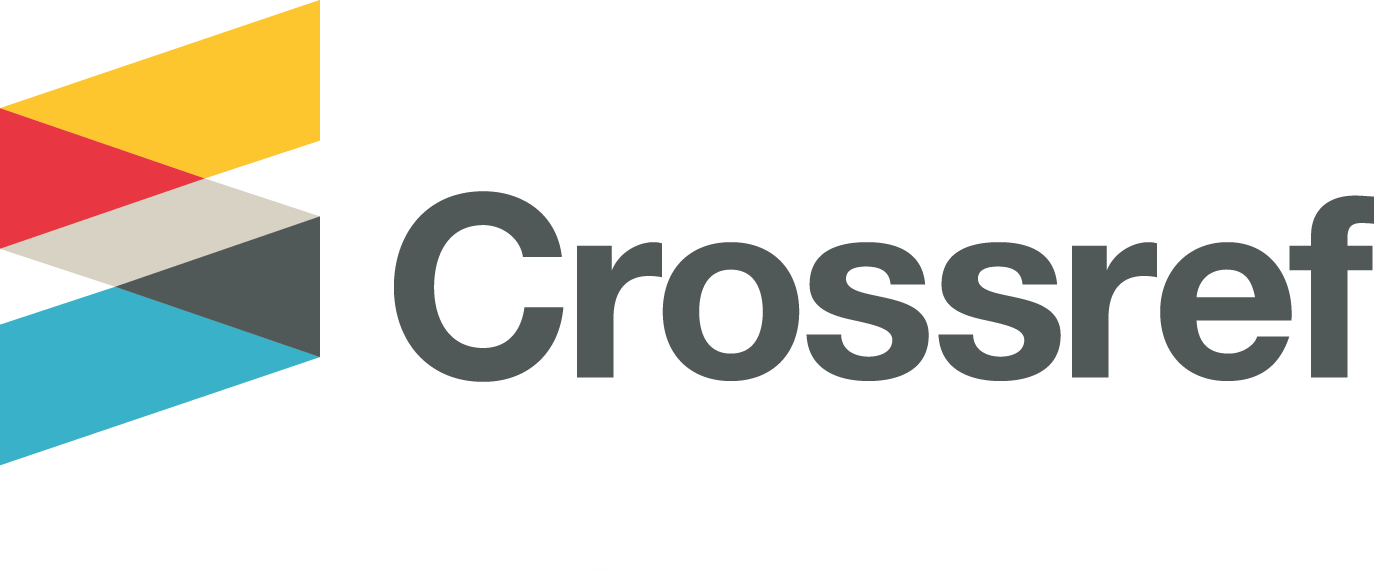The Effectiveness of a Combination of Relaxation and Cognitive Restructuring Techniques in Managing Anxiety in College Students
Abstract
Anxiety disorders are one of the most common mental health problems experienced by adolescents and young adults around the world, including university students. Those who experience anxiety often face difficulties in learning and problem-solving. In the cognitive behavioral therapy approach, one of the most common sources of anxiety is irrational thoughts and beliefs within the individual. If left untreated, anxiety can lead to severe consequences, including depression. This study aims to assess the effectiveness of a combination of cognitive restructuring therapy and relaxation techniques in reducing anxiety and irrational thoughts that trigger anxiety in college students. The research method used a single-subject pre-test post-test design with the subject being a 22-year-old male college student. Measurements were taken using the Beck Anxiety Inventory (BAI) and the Shortened General Attitudes and Beliefs Scale (SGABS). The results showed the effectiveness of the intervention in reducing irrational attitudes and beliefs that trigger anxiety in the subject. Subjects became more proficient in identifying, debating, and restructuring irrational thoughts into rational and adaptive thoughts. In addition, the subjects effectively applied relaxation techniques, which helped them feel more comfortable when facing anxiety-provoking situations. The implications of this study indicate the importance of applying a combination of cognitive restructuring therapy and relaxation techniques in overcoming anxiety among college students.
Gangguan kecemasan adalah salah satu gangguan mental yang paling umum terjadi pada remaja dan dewasa muda di seluruh dunia, tak terkecuali pada mahasiswa. Mahasiswa yang mengalami kecemasan dilaporkan menderita kesulitan belajar dan pemecahan masalah. Dalam pendekatan terapi perilaku kognitif, salah satu sumber kecemasan yang paling sering ditemui adalah pemikiran dan keyakinan yang irasional pada diri individu. Apabila tidak ditangani dengan tepat kecemasan dapat berakibat fatal dan berujung pada depresi. Penelitian ini bertujuan untuk mengkaji efektivitas kombinasi terapi restrukturisasi kognitif dan teknik relaksasi dalam mengurangi kecemasan dan pemikiran irasional yang memicu kecemasan pada mahasiswa. Metode penelitian yang digunakan adalah desain subjek tunggal pre-test post-test dengan satu mahasiswa laki-laki berusia 22 tahun sebagai subjek. Pengukuran dilakukan dengan menggunakan Beck Anxiety Inventory (BAI) dan Shortened General Attitude and Beliefs Scale (SGABS). Hasil penelitian menunjukkan bahwa intervensi ini efektif dalam menurunkan sikap dan kepercayaan irasional yang memicu kecemasan pada subjek. Subjek menjadi lebih mampu mengidentifikasi, mendebat, dan merestrukturisasi pemikiran irasional menjadi lebih rasional dan adaptif. Subjek juga dapat menerapkan teknik relaksasi dengan efektif yang membantu dirinya merasa lebih tenang dalam menghadapi situasi yang memicu kecemasan. Implikasi dari penelitian ini adalah pentingnya penerapan kombinasi terapi restrukturisasi kognitif dan teknik relaksasi dalam mengatasi kecemasan pada mahasiswa.
Keywords
Full Text:
FULL TEXTReferences
Adriansyah, M. A., Rahayu, D., & Prastika, N. D. (2017). Pengaruh terapi berpikir positif, cognitive behavior therapy (CBT), mengelola hidup dan merencanakan masa depan (MHMMD) terhadap penurunan kecemasan karir pada mahasiswa Universitas Mulawarman. Psikoislamika : Jurnal Psikologi Dan Psikologi Islam, 14(1), 5. https://doi.org/10.18860/psi.v14i1.6497
Angold, A. (2003). Adolescent depression, cortisol and DHEA. Psychological Medicine, 33(4), 573–581. https://doi.org/10.1017/S003329170300775X
Apriliya, P. (2022). Efektivitas teknik restrukturisasi kognitif dalam layanan konseling kelompok untuk mereduksi kejenuhan belajar daring pada mahasiswa [Skripsi]. Universitas PGRI Adibuana Surabaya.
Beck, J. S. (2011). Cognitive behavior therapy: Basics and beyond (2nd ed.). Guilford Press.
Borkovec, T. D. (2006). Applied relaxation and cognitive therapy for pathological worry and generalized anxiety disorder. In Worry and its Psychological Disorders (pp. 273–287). Wiley. https://doi.org/10.1002/9780470713143.ch16
Borkovec, T. D., & Costello, E. (1993). Efficacy of applied relaxation and cognitive-behavioral therapy in the treatment of generalized anxiety disorder. Journal of Consulting and Clinical Psychology, 61(4), 611–619. https://doi.org/10.1037/0022-006X.61.4.611
Buchanan, J. L. (2012). Prevention of depression in the college student population: A review of the literature. Archives of Psychiatric Nursing, 26(1), 21–42. https://doi.org/10.1016/j.apnu.2011.03.003
Cohen, S., Gianaros, P. J., & Manuck, S. B. (2016). A stage model of stress and disease. Perspectives on Psychological Science, 11(4), 456–463. https://doi.org/10.1177/1745691616646305
Corey, G. (2008). Theory and Practice of Counseling and Psychotherapy (8th ed.). Brooks/Cole.
David, D., Lynn, S. J., & Ellis, A. (2009). Rational and irrational beliefs: Research, theory, and clinical practice. Oxford University Press.
DiGiuseppe, R. A., DiGiuseppe, R., Doyle, K. A., Dryden, W., & Backx, W. (2013). A practitioner’s guide to rational-emotive behavior therapy. Oxford University Press.
DiGiuseppe, R., & David, O. A. (2015). Rational emotive behavior therapy. In H. T. Prout & A. L. Fedewa (Eds.), Counseling and psychotherapy with children and adolescents: Theory and practice for school and clinical settings (pp. 155–215). John Wiley & Sons.
Ellis, A. (2004). Why rational emotive behavior therapy is the most comprehensive and effective form of behavior therapy. Journal of Rational-Emotive & Cognitive-Behavior Therapy, 22(2), 85–92. https://doi.org/10.1023/B:JORE.0000025439.78389.52
Ellis, A. (2005). Can rational-emotive behavior therapy (Rebt) and acceptance and commitment therapy (Act) resolve their differences and be integrated? Journal of Rational-Emotive & Cognitive-Behavior Therapy, 23(2), 153–168. https://doi.org/10.1007/s10942-005-0008-8
Gonzaga, L. R., Dellazzana-Zanon, L. L., & Silva, A. M. (2022). Handbook of stress and academic anxiety: Psychological processes and interventions with students and teachers. Springer Nature.
Gravetter, F. J., & Forzano, L. B. (2020). Research methods for the behavioral sciences (with APA card). Cengage Learning.
Hayama, Y., & Inoue, T. (2012). The effects of deep breathing on ‘tension–anxiety’ and fatigue in cancer patients undergoing adjuvant chemotherapy. Complementary Therapies in Clinical Practice, 18(2), 94–98. https://doi.org/10.1016/j.ctcp.2011.10.001
Kirkpatrick, D. L., & Kirkpatrick, J. D. (2006). Evaluating training programs: The four levels (3rd ed.). Berrett-Koehler Publishers, Inc. (3rd ed.). Berrett-Koehler Publishers, Inc.
Lewis, T. (2022). The anxious brain: Amygdala versus cortex based anxiety. Lewis Psychology.
Lijster, J. M. de, Dierckx, B., Utens, E. M. W. J., Verhulst, F. C., Zieldorff, C., Dieleman, G. C., & Legerstee, J. S. (2017). The age of onset of anxiety disorders. The Canadian Journal of Psychiatry, 62(4), 237–246. https://doi.org/10.1177/0706743716640757
Lindner, H., Kirkby, R., Wetheim, E., & Birch, P. (1999). Shortened general attitude and belief scale. PsycTESTS Dataset. https://doi.org/https://doi.org/10.1023/A:1018741009293
MacInnes, D. (2003). Evaluating an assessment scale of irrational beliefs for people with mental health problems. Nurse Researcher, 10(4), 53–67. https://doi.org/10.7748/nr2003.07.10.4.53.c5907
Marlina, L., Savitri, I. M., Ramdani, A., & Wahyuningsih, S. (2014). Pengaruh cognitive behavior therapy dan tekhnik relaksasi terhadap poskotuwa (program stop merokok mahasiswa). Psikostudia: Jurnal Psikologi, 3(2), 102–108. https://doi.org/http://dx.doi.org/10.30872/psikostudia.v3i2.2249
Nia, K. A., Tahmasebian, H., & Kakabaraee, K. (2014). Comparing Effectiveness of Methods of Training the Mind and Cognitive Restructuring Techniques to Reduce Anxiety in Students. World Applied Programming, 4(3), 102–107.
Novinta, D. N., & Mastuti, E. (2023). Can rational-emotive behavior therapy (REBT) reduce academic anxiety in high school students? Psikostudia : Jurnal Psikologi, 12(1), 123. https://doi.org/10.30872/psikostudia.v12i1.9787
Papenfuss, I., Lommen, M. J. J., Grillon, C., Balderston, N. L., & Ostafin, B. D. (2021). Responding to uncertain threat: A potential mediator for the effect of mindfulness on anxiety. Journal of Anxiety Disorders, 77, 102332. https://doi.org/10.1016/j.janxdis.2020.102332
Paul, G., Elam, B., & Verhulst, S. J. (2007). A longitudinal study of students’ perceptions of using deep breathing meditation to reduce testing stresses. Teaching and Learning in Medicine, 19(3), 287–292. https://doi.org/10.1080/10401330701366754
Perciavalle, V., Blandini, M., Fecarotta, P., Buscemi, A., Di Corrado, D., Bertolo, L., Fichera, F., & Coco, M. (2017). The role of deep breathing on stress. Neurological Sciences, 38(3), 451–458. https://doi.org/10.1007/s10072-016-2790-8
Rindiani, R. (2022). ). Teknik relaksasi otot progresif berpengaruh terhadap penurunan kecemasan pada mahasiswa tingkat akhir dalam menyusun skripsi di STIKIM tahun 2021. Jurnal Interprofesi Kesehatan Indonesia, 2(1), 179–185. https://doi.org/10.53801/jipki.v2i1.34
Roy-Byrne, P. P., Davidson, K. W., Kessler, R. C., Asmundson, G. J. G., Goodwin, R. D., Kubzansky, L., Lydiard, R. B., Massie, M. J., Katon, W., Laden, S. K., & Stein, M. B. (2008). Anxiety disorders and comorbid medical illness. General Hospital Psychiatry, 30(3), 208–225. https://doi.org/10.1016/j.genhosppsych.2007.12.006
Trivedi, J., & Gupta, P. (2010). An overview of Indian research in anxiety disorders. Indian Journal of Psychiatry, 52(7), 210. https://doi.org/10.4103/0019-5545.69234
Usman, N., Widyastuti, W., & Ridfah, A. (2021). Teknik deep breathing relaxation untuk menurunkan kecemasan pada mahasiswa saat bimbingan skripsi. PEMBELAJAR: Jurnal Ilmu Pendidikan, Keguruan, Dan Pembelajaran, 5(2), 77. https://doi.org/10.26858/pembelajar.v5i2.19411
Verawaty, K., & Widiastuti, S. H. (2020). Pengaruh teknik relaksasi napas dalam terhadap tingkat kecemasan mahasiswa semester II dalam menghadapi ujian akhir semester di Akademi Perawatan RS PGI Cikini. JURNAL KEPERAWATAN CIKINI, 1(1), 16–21. https://doi.org/10.55644/jkc.v1i1.26
Yang, X., Fang, Y., Chen, H., Zhang, T., Yin, X., Man, J., Yang, L., & Lu, M. (2021). Global, regional and national burden of anxiety disorders from 1990 to 2019: results from the Global Burden of Disease Study 2019. Epidemiology and Psychiatric Sciences, 30, e36. https://doi.org/10.1017/S2045796021000275
DOI: http://dx.doi.org/10.30872/psikoborneo.v11i4.13125
Refbacks
- There are currently no refbacks.
Copyright (c) 2023 Mitra Atensi & Tjut Rifameutia

This work is licensed under a Creative Commons Attribution-ShareAlike 4.0 International License.
PSIKOBORNEO: Jurnal Ilmiah Psikologi Published by Faculty of Social and Political Siences, University of Mulawarman, Samarinda, East Kalimantan and This work is licensed under a Creative Commons Attribution-ShareAlike 4.0 International License.
________________________________________
PSIKOBORNEO: Jurnal Ilmiah Psikologi
Department of Psychology
Faculty of Social and Political Siences, University of Mulawarman
Jl. Muara Muntai Kampus Gn. Kelua Samarinda 75411
Phone: +62 813 35350368
E-Mail: psikoborneo@gmail.com / psikoborneo@fisip.unmul.ac.id
















